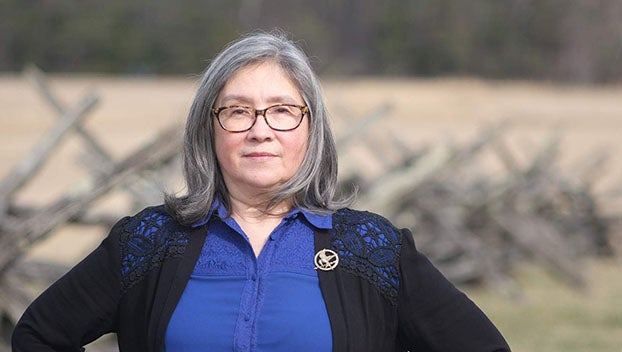Alternatives to trick-or-treating
Published 6:00 am Friday, October 23, 2020
|
Getting your Trinity Audio player ready...
|
The COVID-19 pandemic is set to alter another tradition in some localities as Halloween approaches.
The Town of Farmville and the Town of Dillwyn are among the localities that have announced trick-or-treating has been canceled this year due to the risks of transmitting the novel coronavirus.
However, this does not mean children in the area cannot enjoy the holiday in other ways.
Jessica Lynn, an occupational therapist with Children’s Hospital of Richmond at Virginia Commonwealth University (VCU), shared some creative alternatives that families can pursue on Halloween in 2020.
The first idea is referred to as “reverse trick-or-treating.”
“I don’t know whether this would be allowed in Farmville where they have banned trick-or-treating, but this is a little different where you would drive through a neighborhood and toss candy out at kids standing in the yard,” she said.
With this option, children would still have the joy of collecting candy.
Another trick-or-treating alternative involves “boo-ing” friends. In this activity, friends secretly drop off a bag of candy and possibly other Halloween-themed items at a friend’s house.
“And you leave a little note that says, ‘You’ve been boo-ed,’” Lynn said. “And then you put that sign in your window, and then you do it to somebody else, so everybody knows that your house has been boo-ed, and then pay it forward by doing it to somebody else.”
The health benefit to this activity is that it avoids the transmission risk of being face to face with someone.
“Usually, when we’ve done it, we will go up at night to the porch and leave it on their porch, so when they wake up in the morning, it’s there,” Lynn said. “There’s no interactions.”
There are a variety of scavenger hunt options children and families can enjoy in lieu of trick-or-treating.
Dr. Tiffany Kimbrough, medical director of the newborn nursery in the Children’s Hospital of Richmond at VCU, listed two outdoor options.
“Some neighborhoods are opting to do a scavenger hunt, so having the house hide an item on the outside that’s clearly visible,” she said. For example, “find the house that has a big spider, and (you) check that off your scavenger hunt list.”
She noted this option includes a basket full of candy treats that the participating children can pick up after they have completed the hunt, staying socially distanced throughout the whole event.
“Some families are choosing to do kind of a modified Easter egg hunt, so hiding glow-in-the-dark pumpkins or putting a glow stick inside of an Easter egg with a treat inside of it and doing a trick-or-treat in their backyard with lights out to make it more spooky or more Halloween-themed,” Kimbrough said.
Lynn highlighted the option of families making the inside of their house into a big scavenger hunt.
“Each room has a different theme, and then the kids come through the house and have to find certain things,” she said. “So one of the ideas I had seen was making QR codes so the kids would take around their devices and have to scan a QR code to find out what the next clue was or something like that.”
She also mentioned a neighborhood scavenger hunt idea found online at MomHacks101.com.
“They actually have a lot of Halloween ideas that you can check out,” she said of the website.
Highlighting other trick-or-treating alternatives, Lynn said children could do a virtual costume party on Zoom.
Families could do a family movie night, she added.
“I think it is Netflix that offers a way to stream movies in multiple houses so that you can watch a movie with somebody,” she said, referring to a browser extension called Teleparty. “It works for Netflix, Disney+, Hulu and HBO. And you can do a group chat while you’re watching or pause it, and it pauses for everybody.”
Lynn noted families could adorn the outside of their homes with Halloween decorations or make them look like haunted houses so if somebody walked by, it would be spooky to them.
Other activity options include painting and carving pumpkins, and these can be done with friends.
“You can be with a friend who’s six feet away from you also carving their pumpkin at the same time,” Kimbrough said.
Lynn said families could make healthy treats, and Kimbrough suggested Rice Krispies Treats that are Halloween-themed.
Kimbrough also suggested doing Halloween-themed art projects.
Dr. Luis Siliezar is a pediatrician from Centra who lives in Farmville. He has two children, a 2-year-old and a 6-year-old, and he plans to gear the alternate focus of Oct. 31 to his children’s interests.
“I think particularly what we’ll be doing with my kids is that my older one likes the moon, and (Oct. 31) is going to be the Blue Moon, so it’s the second (full) moon of the month, so I think it’s special in that way,” he said. “So that’s what I’m planning, but I think every parent needs to find what motivates their kids.”
Since not all localities have banned traditional trick-or-treating, medical professionals have advice for those who may still be involved in this activity.
“We agree (that) a ban on traditional Halloween is the safest, but if families elect to do traditional trick-or-treating door to door, then kiddos should be wearing their cloth mask, and that should not be replaced by their costume mask,” Kimbrough said. “So whatever mask comes with their costume shouldn’t be viewed as an appropriate level of (personal protective equipment) PPE for the kiddo.”
She noted that accompanying parents and family members should also wear their cloth masks and make sure that their children are not layered up, mask-wise.
“We’re not advising for families to put the costume mask on top of a cloth mask for the child because we don’t want them to have difficulty with breathing while they’re out doing their trick-or-treating activities,” she said.
She also advised children and families to stay socially distant from others when out in the neighborhood.
“I don’t know about your neighborhood, but my neighborhood can get up to 300 trick-or-treaters, so you want to make sure that you’re six feet away from other family members or from other folks that are out trick-or-treating at the same time and to use good hand hygiene before and after getting trick or treats from the homes,” she said.
This social distancing and hand hygiene is particularly important, because Siliezar said he thinks the greatest risk of COVID-19 transmission will come in the handling of the candy. He noted that children — if they are able to interact with each other rather than being socially distanced — will frequently exchange candy.
Lynn mentioned an exceptional situation that could allow for traditional trick-or-treating without having to take as many precautions.
“If you have been quarantining with some specific families, (you could be) doing something with just those families, whether it’s trick-or-treating in each family, if it’s in the neighborhood, that you just go to those houses, or doing something in a house where each family has a room and you trick or treat across the rooms,” she said.
Additionally, Kimbrough had advice for those deciding whether or not they are going to hand out candy. If they choose to participate, they should be wearing a cloth mask, and they should individually bag the candy and then hand it out, not allowing the kids to stick their hands into a basket.
Lynn had a couple other ideas for candy distributors.
“Some other things to make (traditional) trick-or-treating safer is for neighbors to put tables at the end of the driveway where they’re giving candy out instead of at their porch, just to prevent kids from crowding on a porch, which often happens,” she said. In another example of creative distribution, “somebody said they were going to put a clothesline up in their yard and hang candy from it so a kid could just come and take a piece off and not touch the whole bowl.”








